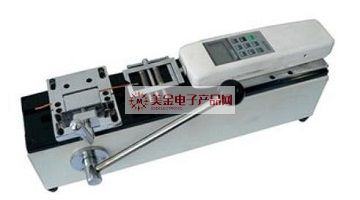Categorization:Product Information
Terminal wire tension is the force used in electrical connections to keep the connection solid and reliable. It is commonly used in electrical terminals, receptacles, connectors, and other devices to ensure that the connection between the wire and the device is solid and can withstand external stress or vibration without loosening or breaking. Standards for terminal wire tension can vary from industry to industry, and application to application. However, in general, the standards require that the terminal wire pull meets the following requirements: Safety requirements: the terminal wire pull must be strong enough to ensure that the connection between the wire and the connector is firm and will not loosen or break. This is essential for the normal operation of the circuit and personal safety. Reliability requirements: Terminal wire tension should be able to withstand the stresses and vibrations that the wire may encounter in use, such as temperature changes, mechanical vibrations, etc.. It should be able to maintain the reliability of the connection without interference from the external environment. Standardized Requirements: In order to ensure consistency and interchangeability of the connection, the terminal wire pull is usually required to conform to appropriate standards and specifications. These standards may be set by international standards organizations (such as the International Electrotechnical Commission, or IEC for short), industry associations, or relevant regulations. Test Method Requirements: Determining standards for terminal wire pull also requires consideration of the specification of test methods and measuring equipment. This includes the use of appropriate tools for tension testing and ensuring the reliability and accuracy of the test results. In many industries and applications, there are generally specific standards and specifications that define the requirements for terminal wire pull. For example, in the electronic equipment manufacturing industry, commonly used standards include IPC's (Electronic Industries Consortium) IPC-A-620, which defines requirements for wire and cable installations, including terminal wire pull. In some related standards, the specific numerical requirements for terminal wire pull are not standardized, but are evaluated on a case-by-case basis. This is because different circuits and equipment may have different wire sizes, materials and operating environments, and therefore the requirements for pulling force may vary. To summarize, terminal wire pull force is the force used to keep the connection solid and reliable, and has its own standards and specifications in different industries and applications. Ensuring that the connection between the wire and the equipment is solid and not loose or disconnected is an important factor in ensuring the proper functioning of the circuit and personal safety.
-About US dollars electronic products network platform related to the introduction and sales of products brief: US dollars electronic products network - a professional agent / production / sales of a variety of {connectors | wiring harness | wire and cable products }; if you have a related [connectors | wiring harness | wire and cable products] purchasing / sourcing needs or would like to buy / to understand which connectors | wiring harness | wire and cable products we can provide solutions, please contact the following Division I business personnel; If you have a related [connectors | wiring harness | wire and cable products] sales / resources and promotion needs, please click "→ Business Cooperation ←" to discuss with a person! If you have related [connectors | wire harness | wire and cable products] sales / resources and promotion needs, please click on the "¡¡ Business Cooperation ←" to discuss with a person!